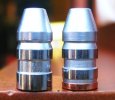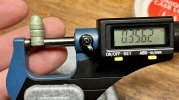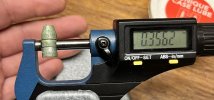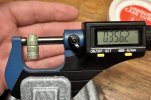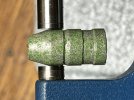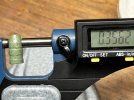CWLONGSHOT
Well-Known Member
I thought it a few years ago.. But it was 2013 I was gifted some Saeco 353 bullets.
I really like the shape! I started looking for my own. I missed a couple on forums and passed on a few too costly.
Tommy boy lent me a couple molds some time back and one was somewhat similar to this 353 only gas checked.
Last week I found one on eBay. I watched it all week and it crept up a lil every few days. It was approaching my predetermined max $$.
Then Yesterday, I realized it came with Saeco handles... The add is written and no pics show both mold and handles. I always consider a fraud possibility. We all know some people suk and time will tell what arrives. But apparently the others was snoozing at close. I was able to get it for less then I initially decided as max bit BEFORE I REALIZED it came with handles!
Mold looks/appears very lightly used and or VERY well cared for.
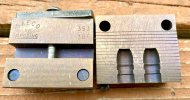
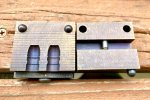
I see some blues, telling of overheat. Hoping nothings warped.. Comes in factory box too.
CW
I really like the shape! I started looking for my own. I missed a couple on forums and passed on a few too costly.
Tommy boy lent me a couple molds some time back and one was somewhat similar to this 353 only gas checked.
Last week I found one on eBay. I watched it all week and it crept up a lil every few days. It was approaching my predetermined max $$.
Then Yesterday, I realized it came with Saeco handles... The add is written and no pics show both mold and handles. I always consider a fraud possibility. We all know some people suk and time will tell what arrives. But apparently the others was snoozing at close. I was able to get it for less then I initially decided as max bit BEFORE I REALIZED it came with handles!
Mold looks/appears very lightly used and or VERY well cared for.


I see some blues, telling of overheat. Hoping nothings warped.. Comes in factory box too.
CW
Last edited:

